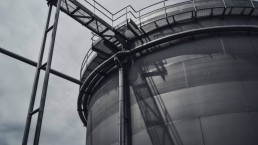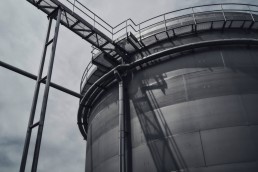Infrastructure after Covid-19 – when the mould is broken where do you want to be?
Competition or collaboration? Navigating change in infrastructure after Covid-19
The Covid-19 pandemic has brought about rapid unprecedented change. Companies have responded to imposed restrictions, people have adapted to new ways of working, and the impact on the economy, employment and productivity has been immense.
Businesses face an ever-shifting timescale for recovery but uncertainty on how they need to adapt in the short, medium and longer term.
A commitment to investment in infrastructure
With uncertainty over the shape of economic recovery, the UK government is under increasing pressure to provide answers. The current political agenda is balancing the risk of further outbreaks against the need to kick-start the economy and get people back to work. Infrastructure is a key part of this recovery plan.
As such, we are seeing a range of statements, commitments and emerging policies that::
- Commit to accelerated investment in infrastructure
- Criticise past failings in the delivery of major programmes which have taken too long and cost too much
- Question how other countries can do it so much better than us
- Recognise that we have developed a huge burden of bureaucratic processes
- Challenge the slow adoption of new technologies and innovation
- Reinforce previous goals on climate change and the environment
What does this mean for core infrastructure and regulated industries?
The services and facilities provided by infrastructure and regulated industries are essential to the future growth of the economy. The challenge is how to fairly manage the cost of recovery, which will ultimately be passed onto the consumer. This creates further pressure on the whole system including clients and service providers. Some key questions and considerations include:
For Clients (or sponsors)
- With greater pressure on household budgets, customer expectations on service and value will increase
- Customers will be less tolerant of failure and companies will be under greater scrutiny
- Social and environmental conscience is increasing
- As a result of COVID-19 there will be sustained change in the way people work. But is the full impact fully understood?
- Clients or sponsors will be under increased pressure from the regulators to deliver more for less
- Continuing to stretch existing resources and deliver incremental change will not be enough
- Companies will be driven to develop different and more efficient operating models
For Service Providers
- No longer contractors or consultants but “Service Providers”
- Has traditional contracting had its day and does it really deliver what clients and customers are ultimately looking for?
- Service Providers will be under the greatest pressure to address the higher-level challenges through creating new ways of working or new service offerings
- “Necessity is the mother of invention” – the time of greatest need will drive the greatest change and the more agile companies will be those that win
- Traditional contracts delivered in a traditional way will become an increasing “race to the bottom” based on price with associated increase in failure
Innovation and technology inevitably has a major part to play in addressing the above.
What part should Innovation and Technology play?
Regulated industries are notoriously slow adopters. If this is to change, it is essential to understand the reasons why and break these paradigms.
- Risk of failure is too high either in terms of impact on customers or regulatory action
- Procurement processes are cumbersome and often preclude SMEs/Start-ups
- In reality, Intellectual Property has a very short shelf-life, products are quickly copied
- There is more to be gained from running faster and letting others follow compared to standing still and protecting what you have got
With many organisations facing the same challenges, is there something to be learned from collaboration?
Competition or Collaboration?
Regulation has often been based on the premise of driving or simulating competition. So, what delivers the greatest benefit – organisations collaborating or competing? Many “alliance” delivery models are based on the benefits of collaboration which raises a number of questions:
- Regulated utilities by their nature are often monopolies so why isn’t there far greater collaboration and sharing of ideas?
- Technology/Innovation start-ups often have to prove their concepts several times over to separate clients passing through individual tortuous procurement routes. As a result many collapse before they start. As a wider industry why do separate companies re-invent the same wheel
- Contractors/Service Providers provide similar services to different clients and sectors in the same geographic area. Is there more to be gained from a common approach across sectors?
- If the same Service Provider is providing a service across multiple clients and sectors who is the regulator actually regulating – the Client or The Service Provider?
- If the end service across sectors is a similar service why should there be different regulatory models and different regulatory measures or even different regulators?
Acceleration, adaption and adoption
The COVID-19 pandemic has had an undeniable impact on organisations. Businesses have been forced to adopt a more radical and agile approach in how they adapt to change.
This unprecedented challenge has also created opportunities. Many businesses have failed but some have flourished. In the main, these organisations have embraced a culture of learning from others. They have collaborated and openly shared resources. They have undertaken the accelerated development of complex solutions and executed them with simplicity.
Going forward, significant commitments have been made, expectations are high and pressure on delivery will increase. The challenges will necessitate change and those that move fastest stand to gain the most.
The authors
Get in touch
We help infrastructure organisations to meet challenging targets through strategy, operating model design and transformation.
Contact us to discuss how we can help your organisation.
Want to find out more or meet one of our Infrastructure team? Contact us by email, phone or our web form.
Company-wide performance improvement at UK water utility
The issue
- Ineffective incentive structure resulting in organisational silos & sub-optimal performance (in-house and contractors)
- Limited long-term planning and investment as result of weak and inaccurate in-house Asset Knowledge
- Legacy support services from merged smaller companies resulted in fragmented internal processes
- Lack of job prioritisation and adequate planning leading to poor productivity & rework
What we did
- Development and introduction of single performance management framework and incentive system to drive efficiency and customer focused culture
- Implementation of an Asset Capability Centre focused on three capability areas: Physical Asset Management, Stewardship & Delivery; revalidated proposed Capex and ran adaptive approaches on costs
- Implemented regulatory compliant Shared Services with revised governance, improved service levels and cost efficiencies
- Redesign and implementation of new job initiation, planning and scheduling processes

The results
- 20m annualised improvement in Totex
- Annualised Capex avoidance of c£18m throughout the regulatory period
- Annualised Opex reduction of c.£3m
- 25% reduction in shared service cost base
- 20% productivity increase in Field work, 30% increase in RFT and 10% reduction in Customer Complaints
£20m
annualised improvement in Totex
£18m
annualised Capex reduction
c£3m
annualised Opex reduction
25%
reduction in shared service cost base
20%
productivity increase in Field work
10%
reduction in customer complaints
An award-winning team






CONTACT US TO FIND OUT HOW WE CAN HELP
Infrastructure: back to the old Benchmarks?
Edem Eno-Amooquaye discusses why the Infrastructure & Utilities sectors should refer to established Manufacturing practices as benchmarks for approaches to optimise both productivity and capacity.
Evolving approaches, same issues?
The Infrastructure & Utilities sectors have moved on significantly from an era when Six Sigma and adopting the productivity improvement methodologies of organisations such as Motorola and GE signalled the leading edge of business change.
Infrastructure & Utilities organisations have evolved in the industries and approaches that they look to as benchmarks. In an environment that demands customer centricity, competition, digitisation and advanced capacity management, infrastructure owners now model their aspirations on phenomena such as the dynamic slot control methods of airlines and the real-time data management of logistics companies.
Questions arise when we consider whether the modern challenges being faced by the sectors are being framed in accordance with the solutions that we aspire to offer rather than there being a suitable acknowledgment of the boring facts. These facts are that along with the new challenges, the age-old issue of how to improve productivity remains. Organisations are ‘going digital’ in line with industry trends and customer user experience expectations but have not necessarily gained full control of the basics. In the UK for example, the economy has been shackled by consistently low productivity since the financial crisis and a significant shortfall to productivity levels on par with the other European G7 nations (France, Germany and Italy) has long been maintained. The reason for this shortfall is a source of ongoing debate but the optimum balance between factors that influence productivity such as process efficiency, labour practices, regulation and technology adoption is one that the UK’s G7 counterparts have come a lot closer to achieving.
Out with the new and in with the old?
It would be too simplistic a next-step to infer that these age-old issues can be addressed by the age-old solutions, but this does not mean that the basics should be neglected. Perhaps the Infrastructure and Utilities sectors should consider reverting to a more traditional industry benchmarks source and its associated approach to productivity – Manufacturing.
Leading organisations look to continuously improve performance, driven by a philosophy that there is always hidden capacity or cash to be found by addressing the inefficiencies that have crept in over-time and become accepted. In a recent example of this Curzon Consulting looked at the fundamental components of availability, performance and quality to assess how Overall Equipment Effectiveness (OEE) can be adapted from its Manufacturing roots and used in the Water industry. This analysis identified considerable opportunities to increase OEE from today’s current levels and optimise capacity in waste water treatment businesses. Utilities companies have historically built waste water treatment plants in response to the need to deal with waste in specific locations but without a full strategic understanding of demand in an area, let alone a real concern for how to operate most efficiently or the potential for commercial opportunities. The application of OEE offers benefits to waste water treatment businesses that include reduced downtime and maintenance costs, better management of the equipment life cycle, labour efficiencies, increased productivity through improved visibility into operations, increased productivity by identifying bottlenecks, and, increased profitability. This time around, the application of OEE encourages Utilities organisations to look beyond straightforward process improvement to understand the impact that other functions are having on the ability of Operations or Capital Delivery teams to maximise their effective use of capacity. This should be considered within the context of a totex world for infrastructure and utilities organisations where end-2-end asset management, efficiency of decision making across lifecycle phases and relationships (often with alliance partners) between Engineering, Design, Operations, Project Management and Commercial functions are now paramount.
An even more provocative assertion from the Manufacturing industry acknowledges the competition driven and regulatory need for enhanced customer centricity but challenges whether businesses should pursue this at any cost. In a Manufacturing context this questions things such as excessive warehouse costs due to stockpiling of goods under the guise of mitigating against the risk of high demand products being unavailable but in fact being a buffer to mask ineffective supply chains. Parallels can be drawn with the digital platforms that many Utilities organisations are developing. The associated business cases promise the benefits of improved customer service performance against a backdrop of new metrics that will either incentivise or penalise companies, e.g. the Water industries new measure of developer experience (DMEX). These embrace the industry theme of digitisation but may retain inefficiencies as they build and hard code layers of old working habits and excessive touch point (process steps that would be labelled as ‘waste’ according to the age-old solutions). While the value of the human touch in customer interaction can never be underestimated the industry must be careful not to regress and allow productivity to be perceived as something that contradicts effective customer service. Further, digitisation is not an end in itself. Wasteful processes on digital platforms are still wasteful processes. Productivity improvements in the infrastructure asset lifecycle and the Lean design of associated system enabled processes should be considered as critical.
So, where to look for the good news?
Real encouragement and evidence of new direction is provided by Transport Infrastructure organisations. Whilst the European Railway with its objective of interoperability and technical compatibility of infrastructure and systems may appear to have struggled to make meaningful progress, key stakeholders in the Rail sector have observed the plans for intelligent supply chain networks and automation in the Manufacturing industry and realise that embracing the Industrial Internet of Things (IIoT) as the approach to technology driven change in a similar manner will be key to transforming the concept of a digital railway into reality. As timely evidence of this, Network Rail has recently announced its Digital Rail Strategy which is headlined by the commitment that all new trains and signalling will utilise advanced technology from 2019. Not to be left out, Utilities companies are also getting on to the front foot. Disparate remote asset monitoring technologies and business specific customer portals are now being firmly placed within strategies for full lifecycle digital asset data models, integrated systems and artificial intelligence led analytics. This demonstrates that the Manufacturing sector’s evolving approach to technology adoption, a key productivity driver, has remained as a crucial, actionable benchmark for the Infrastructure & Utilities sectors.
The infrastructure and utilities sectors must refer to established Manufacturing practices as they have in the past as benchmarks for approaches to optimise both productivity and capacity. In an exciting age of digitisation and customer centricity it will be important to maintain the necessary focus on the principles of productivity and operational effectiveness that underpin efficient business. In terms of the new industry challenges being addressed, rather than waiting to take instruction from the current Manufacturing practices being developed and established, the manner in which progressive Infrastructure & Utilities sector organisations are embracing IIoT and also seeking both inspiration and direction from various other industries indicates that in the not too distant future the sector may itself become a more strongly recognised source of benchmarks for digitisation, connectivity and other future ways of working.











